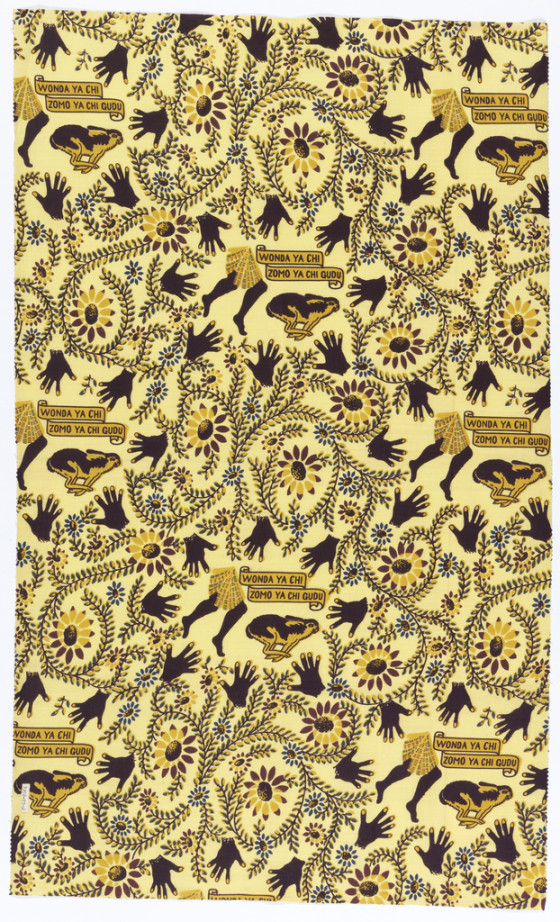Adinkra wrappers are traditionally worn for funerals. Their many symbols are printed from individually carved stamps, and the selection of symbols and their placement on the gridded cloth are considered a sort of communication from the living to the ancestors.
Hundreds of unique symbols have been identified, but their meanings are not easily de-coded. Some represent physical objects, like the king’s stool, but most are culturally specific visual cues related to proverbs or common sayings within the community. Some of the proverbs evoked by this cloth include: “There is nothing wrong with learning from hindsight,” and “No one lives who saw the beginning of the world, and none will see its end, except God.” [1]
The complex interplay among language, pattern, and meaning is a source of seemingly endless inspiration in African design. European companies who exported to West Africa attempted to satisfy this love. This design by German manufacturer Heinrich Habig Aktiengesellschaft Stoffdruckerei for the Nigerian market makes reference to the Hausa expression “Whoever catches a hare has to run for it.” The disembodied hands and running legs create a dynamic, if humorous, graphic composition.
[1]English translations of proverbs expressed in adinkra are often quite varied. The interpretations cited here are taken from Kojo Arthur, Cloth as Metaphor: (Re)Reading the Adinkra Cloth Symbols of the Akan of Ghana (Legon, Ghana: Center for Indigenous Knowledge Systems, 2001).
This adinkra wrapper is on view in the exhibition David Adjaye Selects: Works from the Permanent Collection, along with thirteen other pieces from the museum’s African textile collection.
Susan Brown is Associate Curator in the Textiles Department at Cooper Hewitt, Smithsonian Design Museum.


One thought on “Symbol and Meaning”
Lucie Lawson on June 12, 2019 at 6:50 pm
My great aunt donated the fabric. Born Lucie Kirby I was unaware of my great aunts links to textiles. I am now a teacher of textiles and art in a school in Lincolnshire England. Could you tell me anything about my great aunt Mary and how you came to have her collection.